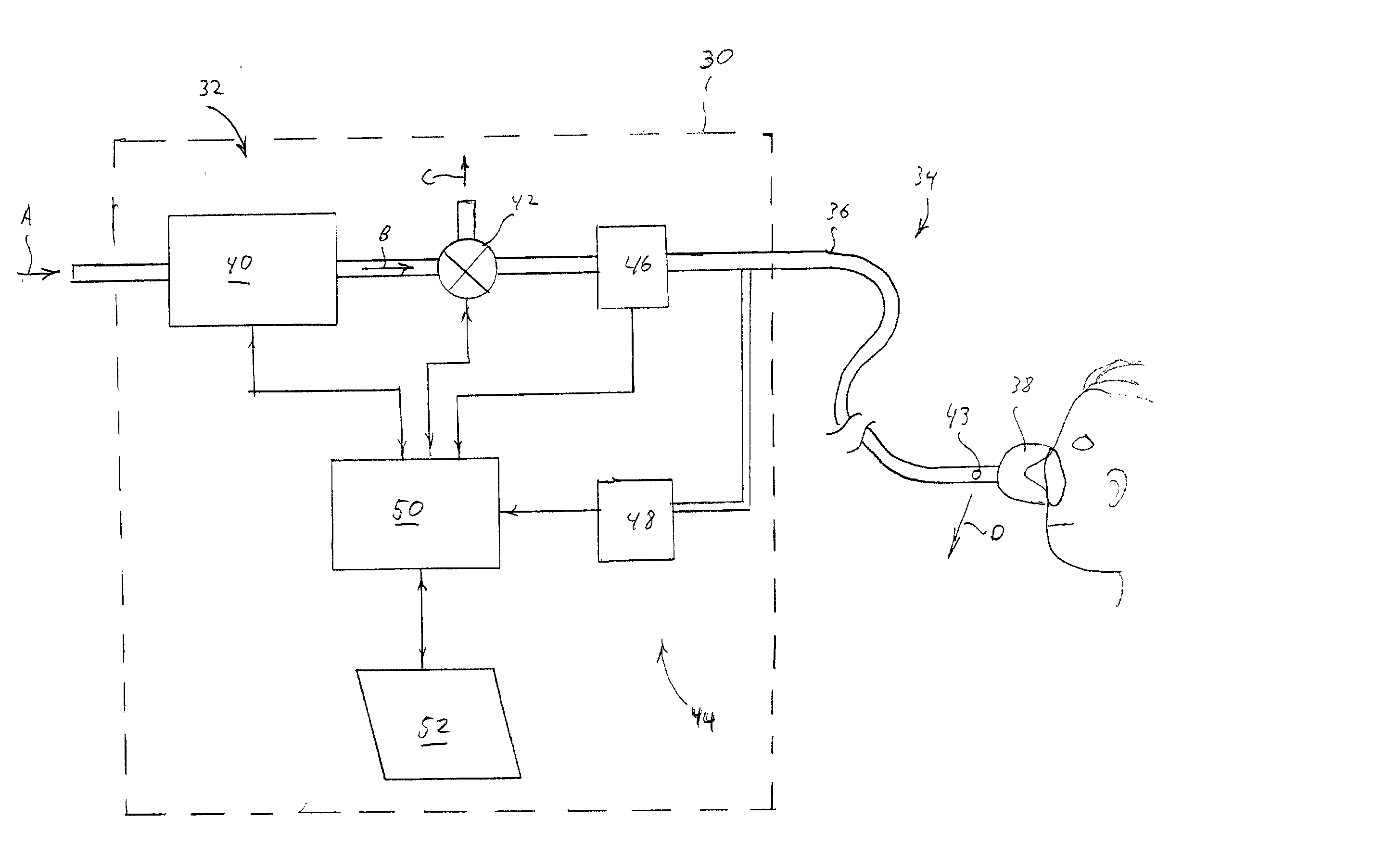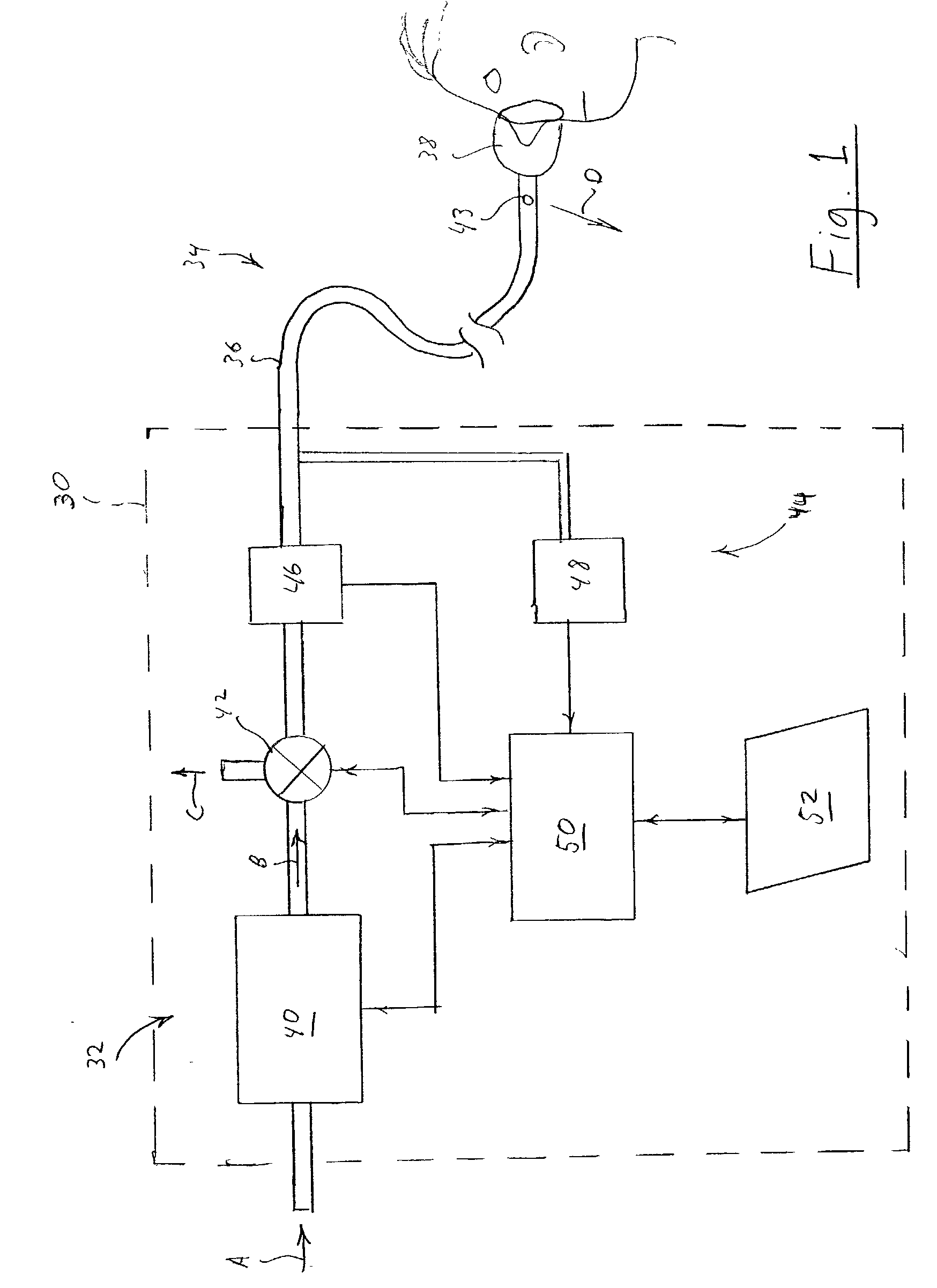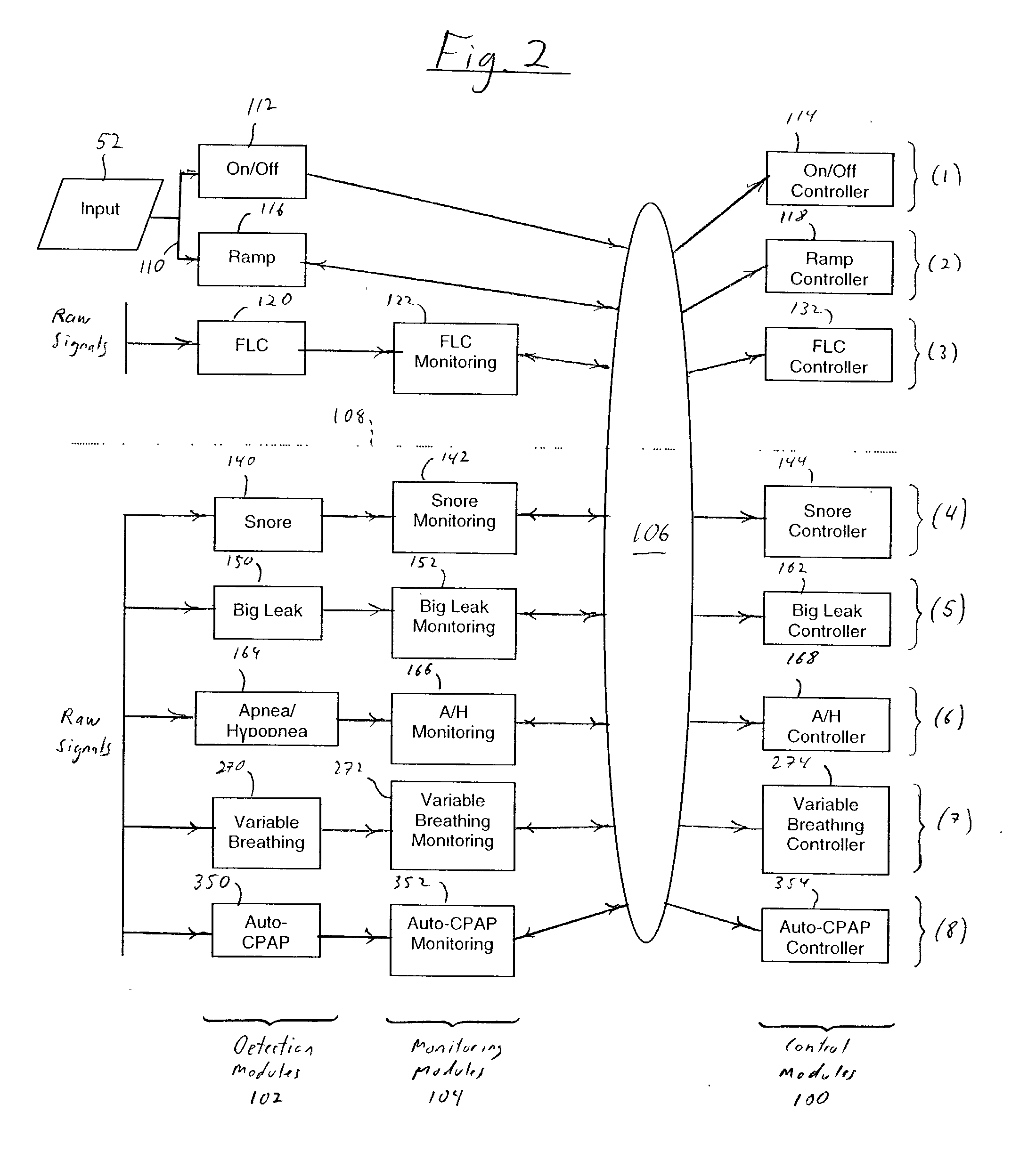Auto-titration pressure support system and method of using same
a technology of auto-titration and pressure support, which is applied in the direction of valve operating means/release devices, applications, diagnostic recording/measuring, etc., can solve the problems of disordered breathing, severe oxyhemoglobin desaturation, sleep fragmentation and complete or near complete cessation,
- Summary
- Abstract
- Description
- Claims
- Application Information
AI Technical Summary
Benefits of technology
Problems solved by technology
Method used
Image
Examples
case 2
[0260] b. Case 2--Return from a Higher Priority Controller
[0261] During the course of the pressure support therapy, which typically repeats throughout the night, higher level controllers, such as snore controller 144 or apnea / hypopnea controller 168, may temporarily take control and perform pressure changes as discussed above. Once all active high priority controllers are finished, control is returned to auto-CPAP controller 354. Upon receiving control from a higher priority controller, the auto-CPAP controller performs the same actions as described in Case 1 above, with the exception that the initial 5 minute hold period is replaced by a .about.3 to 3.5' minute period.
[0262] c. Case 3--Patient Pressure Decreases
[0263] When the last 5-minute hold period from either Case 1 or Case 2 is completed, as indicated by pressure curve 520 in FIGS. 27A and 27B, the next search sequence is started. In this search sequence, the pressure delivered by the system is slowly lowered at a rate of 0.5...
second embodiment
[0276] In the present invention, the patient's airflow waveform during a period immediately after the end of the apnea / hypopnea is monitored to determine whether he or she experienced an obstructive / restrictive apnea / hypopnea event or a central apnea / hypopnea event. More specifically, the present inventors understood that the patient's respiratory flow is different at the end of the apnea / hypopnea event depending on whether the patient suffered an obstructive / restrictive apnea / hypopnea or a central apnea / hypopnea. More specifically, as shown in FIG. 30, which depicts a patient's respiratory flow waveform 620 during an obstructive / restrictive apnea / hypopnea event, it has been determined that at the termination of an obstructive apnea / hypopnea event, a patient often tends to take a relatively large gasping breath or series of gasping breaths, generally indicated as breaths 622 in FIG. 30. At the end of a central apnea / hypopnea event, on the other hand, the patient does not tend to tak...
PUM
 Login to View More
Login to View More Abstract
Description
Claims
Application Information
 Login to View More
Login to View More - R&D
- Intellectual Property
- Life Sciences
- Materials
- Tech Scout
- Unparalleled Data Quality
- Higher Quality Content
- 60% Fewer Hallucinations
Browse by: Latest US Patents, China's latest patents, Technical Efficacy Thesaurus, Application Domain, Technology Topic, Popular Technical Reports.
© 2025 PatSnap. All rights reserved.Legal|Privacy policy|Modern Slavery Act Transparency Statement|Sitemap|About US| Contact US: help@patsnap.com



